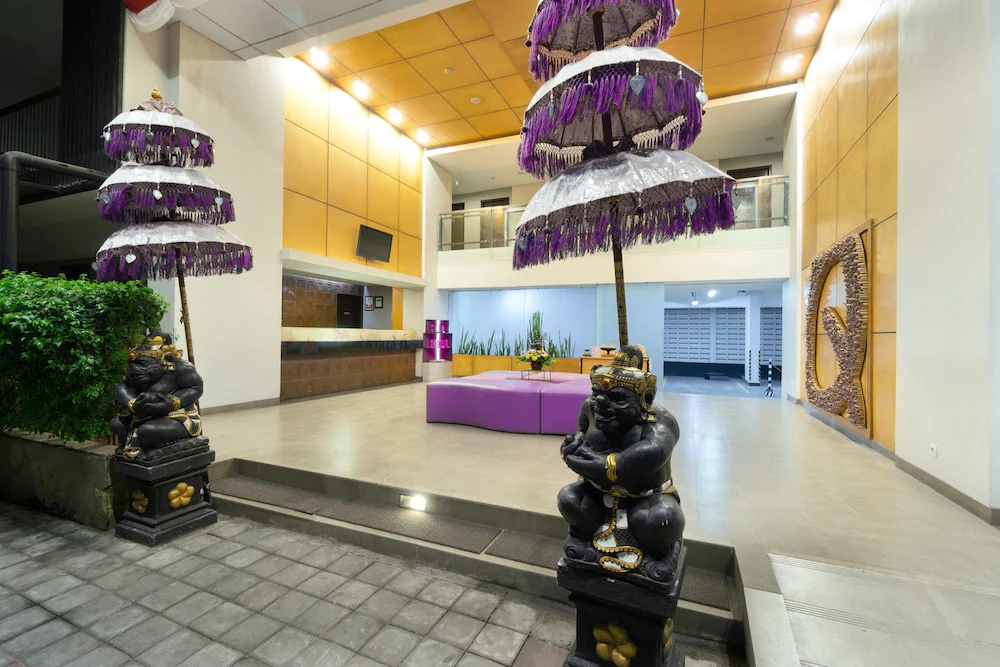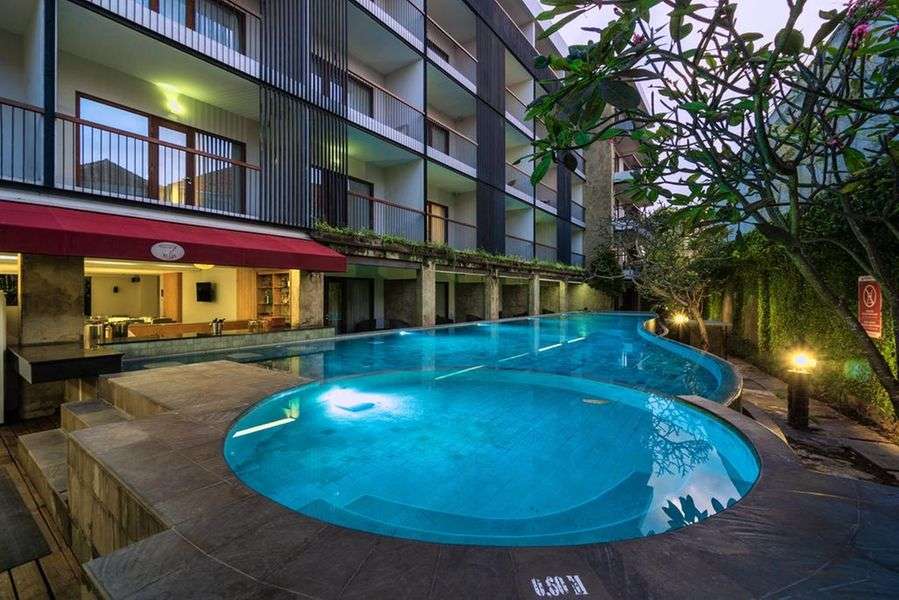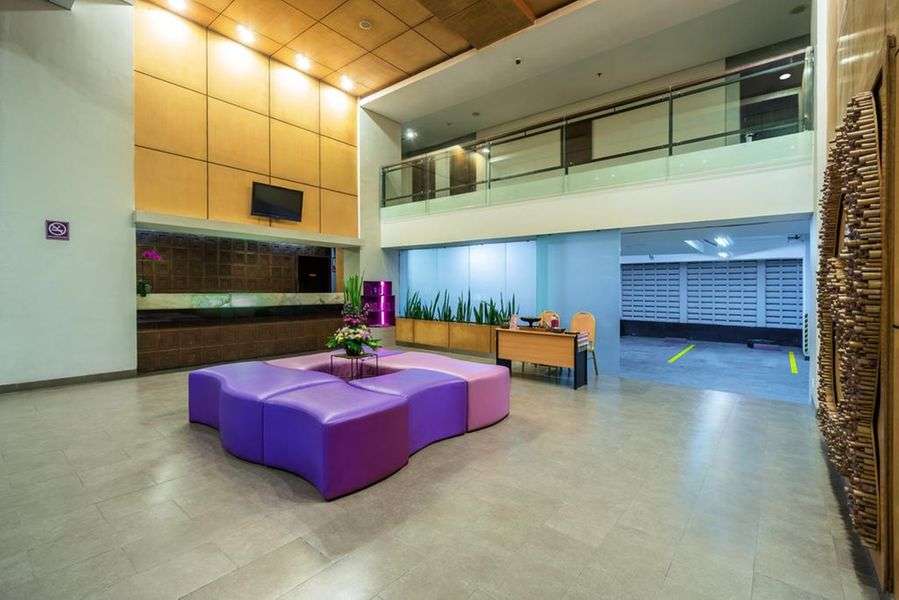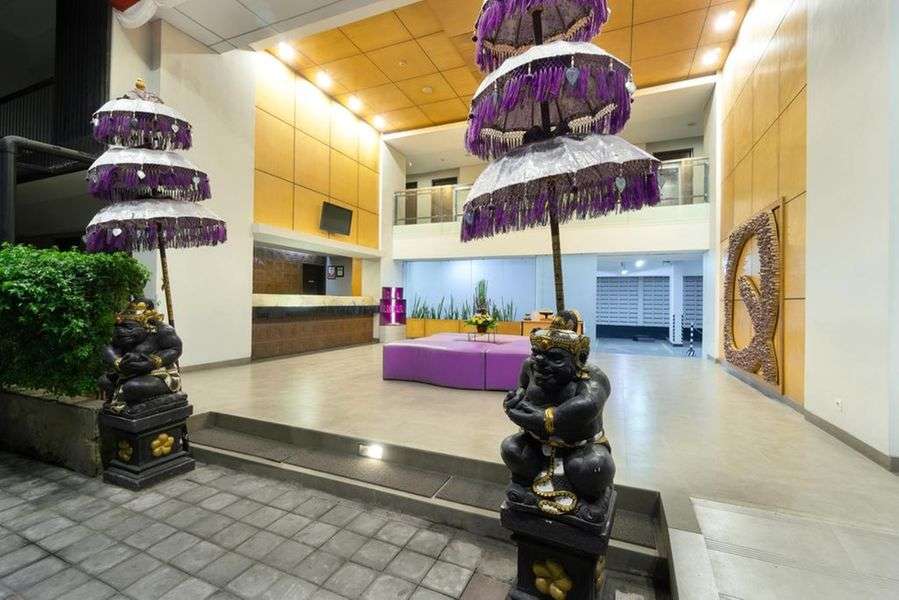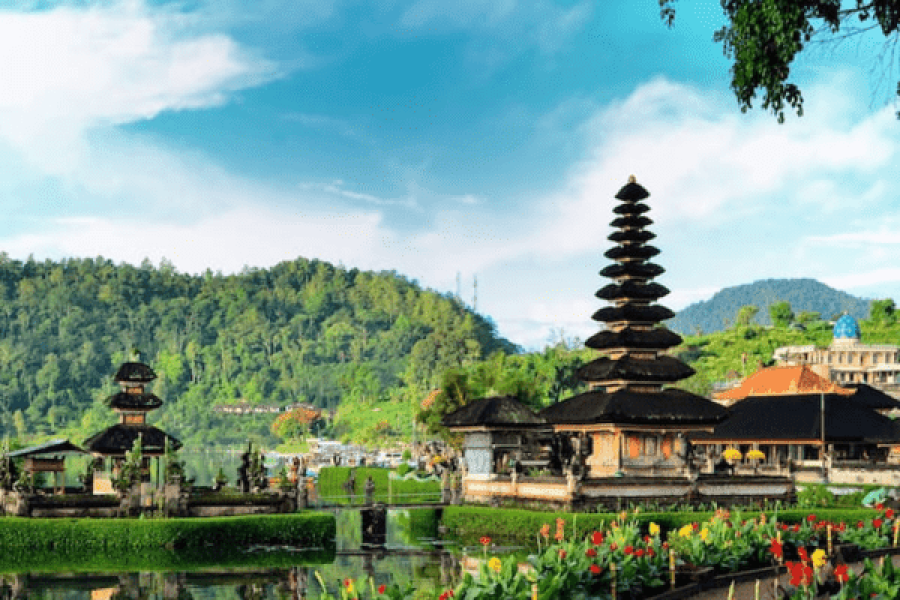Best Bali DMC | B2B DMC for Bali | Plan your Bali Vacation
4 nights
Daily Tour
12 people
___
About this tour
Traveling to Bali Basic for First Timers 5 Days 4 Nights
Bali is a popular island and province in Indonesia, known for its stunning natural beauty, vibrant culture, and tourist attractions. Here are some key aspects about Bali. Bali is located in the westernmost end of the Lesser Sunda Islands, lying between Java to the west and Lombok to the east. It is part of Indonesia and is situated in the Indian Ocean. Bali is renowned for its unique and rich culture. The island is predominantly Hindu, and this is reflected in its temples, festivals, and daily life. Traditional Balinese dance and music are integral parts of the cultural experience.
Tourist Attractions
Bali attracts millions of tourists each year due to its diverse range of attractions. Some of the popular ones include:
Ubud: Known for its art and culture, Ubud is a town in the uplands of Bali. It’s surrounded by lush rice paddies and is a hub for traditional crafts and dance.
Kuta: Famous for its long sandy beach and vibrant nightlife, Kuta is a popular destination for surfers and party-goers.
Seminyak: A more upscale and fashionable area known for its luxury resorts, high-end shopping, and fine dining.
Tanah Lot: A picturesque sea temple perched on a rock, providing stunning sunset views.
Natural Beauty: Bali boasts diverse landscapes, including lush rice terraces, volcanic mountains, pristine beaches, and dense forests. Mount Agung is the highest point on the island and holds great spiritual significance.
Cuisine: Balinese cuisine is known for its flavorful and aromatic dishes. Traditional Balinese food includes dishes like Babi Guling (suckling pig) and Bebek Betutu (slow-cooked duck).
Arts and Crafts: Bali is a hub for traditional arts and crafts, including woodcarving, painting, and batik. Visitors can explore local markets and villages to witness skilled artisans at work.
Festivals: The island celebrates numerous festivals throughout the year, with Galungan and Nyepi being among the most significant. Nyepi is the Balinese New Year and is marked by a day of silence, fasting, and meditation.
Spirituality: Bali is often referred to as the “Island of the Gods” due to its strong spiritual atmosphere. Temples and religious ceremonies are an integral part of daily life.
Diving and Water Activities: Bali offers excellent opportunities for diving and snorkeling, with vibrant coral reefs and diverse marine life. Popular dive sites include Tulamben and Menjangan Island.
Best Time to Visit Bali
The best time to visit Bali depends on your preferences for weather, activities, and crowd levels. Bali has two primary seasons: the dry season (April to September) and the wet season (October to March). Here’s a breakdown:
Dry Season (April to September)
Weather: This period offers sunny and dry weather with lower humidity.
Activities: Ideal for outdoor activities like surfing, snorkeling, diving, and exploring the cultural attractions.
Crowds: This is the peak tourist season, so Bali can be more crowded, and prices may be higher.
Wet Season (October to March)
Weather: Expect occasional heavy rainfall, high humidity, and the possibility of storms. However, it doesn’t rain continuously, and you can still enjoy sunny days.
Activities: While outdoor activities can be affected, the wet season is a great time for spa retreats, cultural experiences, and enjoying lush landscapes.
Crowds: The wet season generally sees fewer tourists, and prices may be lower.
Considering these factors, many travelers prefer the dry season (especially from May to August) for a beach vacation and outdoor activities. However, if you want to avoid crowds and are open to occasional rain, the wet season can be a good option. It’s essential to check specific weather conditions for your travel dates, as Bali’s climate can vary. Keep in mind that Bali’s peak tourist months are July and August, so it’s advisable to book accommodations and activities in advance during this period.
How to Reach Bali
To reach Bali, you typically need to take a flight as it is an island located in Indonesia. Here are the general steps to reach Bali
International Flight to Ngurah Rai International Airport (DPS)
Start by booking an international flight to Ngurah Rai International Airport, also known as Denpasar International Airport (DPS), located in southern Bali.
Choose Your Airline and Route
Many major airlines operate flights to Bali from various international airports. Choose the airline and route that best suits your preferences and budget.
Transit and Connecting Flights
Depending on your location, you may have a direct flight to Bali or you might need to take connecting flights. Common transit points include major international airports in Asia, such as Singapore, Kuala Lumpur, Bangkok, or Jakarta.
Arrival at Ngurah Rai International Airport
Once you arrive at Ngurah Rai International Airport, you will go through immigration and customs procedures.
Transportation to Your Destination
After clearing immigration, you can find various transportation options to reach your accommodation or desired destination in Bali. Taxis, airport shuttles, and private transfers are readily available.
Visa Requirements
Ensure that you check the visa requirements for Bali based on your nationality. Indonesia offers visa-free entry or visa on arrival to citizens of many countries, but it’s essential to confirm your specific visa status before traveling.
COVID-19 Guidelines (if applicable)
As of my last knowledge update in January 2022, the global situation with COVID-19 may impact travel plans. Check the latest travel advisories, entry requirements, and health protocols related to COVID-19 for Indonesia and Bali.
Local Transportation in Bali
Once in Bali, you can use various modes of transportation, including taxis, ride-sharing services, rental scooters, and private drivers, to explore the island.
Always check for the latest travel information, including entry requirements, visa regulations, and any travel advisories, as these can change over time. Additionally, make sure your passport is valid for at least six months beyond your planned date of departure.
Things to do in Bali
Bali, Indonesia, is a popular tourist destination known for its beautiful beaches, rich culture, vibrant nightlife, and stunning landscapes. Here are some things you can do in Bali
Visit Ubud: Explore the cultural heart of Bali, known for its art galleries, traditional dance performances, and the famous Monkey Forest.
Tegallalang Rice Terraces: Admire the breathtaking beauty of the Tegallalang Rice Terraces, a UNESCO World Heritage site known for its stunning landscapes.
Tanah Lot Temple: Witness the sunset at Tanah Lot, a picturesque sea temple perched on a rocky outcrop.
Uluwatu Temple: Enjoy a traditional Kecak dance performance at Uluwatu Temple, located on a cliff with panoramic views of the Indian Ocean.
Beach Hopping: Explore Bali’s famous beaches such as Kuta, Seminyak, and Nusa Dua for surfing, sunbathing, and vibrant beach clubs.
Water Temples: Visit the Tirta Empul and Pura Ulun Danu Bratan temples, known for their beautiful water features and cultural significance.
Scuba Diving and Snorkeling: Discover Bali’s underwater world by engaging in scuba diving or snorkeling at sites like Tulamben and Amed.
Bali Swing: Experience the thrill of swinging over lush landscapes at one of the many Bali Swing parks.
Explore Local Markets: Visit markets like Ubud Market and Sukawati Art Market to shop for traditional Balinese crafts, textiles, and souvenirs.
Mount Batur Sunrise Trek: Embark on a trek to the summit of Mount Batur to witness a breathtaking sunrise overlooking the volcanic landscape.
Visit the Sacred Monkey Forest Sanctuary: Explore the Ubud Monkey Forest, home to hundreds of playful long-tailed macaques in a lush jungle setting.
Bali Safari and Marine Park: Enjoy a day at the Bali Safari and Marine Park, where you can observe wildlife in naturalistic habitats.
Bali Botanic Garden: Escape to the peaceful Bali Botanic Garden, home to a vast collection of tropical plants and flowers.
Traditional Balinese Spa: Indulge in a traditional Balinese massage or spa treatment to relax and rejuvenate.
Balinese Cooking Classes: Learn to cook Balinese cuisine by taking a cooking class and discovering the flavors of local dishes.
Remember to respect the local culture and customs while enjoying your time in Bali. Additionally, check for any travel advisories or updates before planning your visit.
Highlights
- Full Day Ubud
- Kintamani
- Volcano
- Water Sports Half Day
- Uluwatu Kecak Dance
- Monkey Forest
- Taman Ayun Temple and Tanah Lot
- Pvt tours
Included/Excluded
- Stay for 4 nights at Quest Hotel Kuta by ASTON
- Private Transfer from Airport to Hotel - Kuta, Legian, Tuban Kuta
- Ubud and Kintamani - Private
- Water Sports - Glass Bottom Boat + Turtle Island + Snorkling (Seat in Coach Transfers)
- Uluwatu and Kecak dance - Private Basis
- Mengwi - Alas Kedaton - Tanah Lot Sunset - Private
- Private Transfer from Hotel to Airport - Kuta, Legian, Tuban Kuta
- Breakfast included on 4 days
- Passport fees, immunization costs, city taxes at the hotel and local departure taxes (wherever applicable)
- Optional enhancements like room or flight upgrades, or local camera or video fees
- Additional sightseeing, activities and experiences outside of the itinerary
- Early check-in or late check-out from hotels (unless otherwise specified)
- Breakfast, lunches, dinners and drinks (alcoholic and non-alcoholic), unless specified in the itinerary
- Any international and/or domestic flights, unless explicitly mentioned as an inclusion
- Excess baggage charges, and where applicable, baggage not included in your fare
- Tips for services and experiences
- Any Visa required, unless mentioned as an inclusion
- Read useful information and terms for more on what is included and excluded
Itinerary
Arrival at Bali International Airport Ngurah Rai (DPS). Our representative will welcome you at the airport then transfer to your hotel.
- Proceed to Tanjung Benoa Beach for Water Sports (optional water sports include parasailing, jet ski, flying fish, snorkeling, sky tube, sea walker, etc).
- In the evening proceed for tour of Uluwatu Temple. Hanging on a cliff 100 m above the ocean, Uluwatu Temple is a great sight. In the meanwhile, you see the Kecak Dance performed by 50 dancers. Matter of fact, this dance is the only one based on vocals than instrument, dating far back into Balinese history, prior to the use of instruments.
Destinations
Frequently asked questions
The ideal time to visit Bali is during the dry season from April to October when the weather is pleasant with minimal rainfall.
Most visitors receive a 30-day visa upon arrival which cost around IDR 500.000 per person or USD 35/person as of now. Check your country's specific visa regulations for Bali.
The official currency is the Indonesian Rupiah (IDR). Currency exchange services are widely available.
Explore Ubud for its cultural richness, relax on the beaches of Seminyak, witness the Uluwatu sunset, and engage in water sports for a well-rounded experience.
Taxis, ride-sharing services, and motorbike rentals are common. Guided tours and private drivers are popular for exploring the island.
Nasi Goreng (fried rice), Mie Goreng (fried noodles), and Babi Guling (suckling pig) are local favorites. Street markets offer authentic Balinese street food.
Bali has a tropical climate. The dry season (April to October) offers sunny days, while the wet season (November to March) brings occasional heavy rainfall.
Ubud, Kuta, Seminyak, Uluwatu, and Tanah Lot are popular destinations offering a mix of cultural experiences, beaches, and natural beauty.
Yes, English is widely spoken in tourist areas, hotels, and restaurants.
Use local currency for small purchases. Currency exchange services and ATMs are readily available.
Bali is generally safe for tourists. Exercise standard precautions and be mindful of personal belongings in crowded areas.



